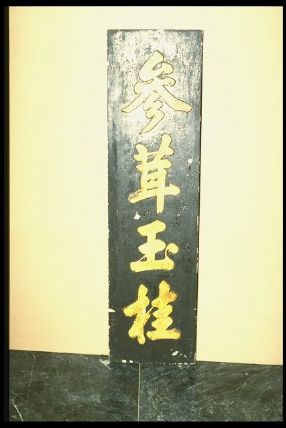As COVID-19 deaths spiked in 2020, Suzanne Firstenberg’s public art installation "In America: How could this happen…"
History Explorer Results (40)
Related Books (6)
Grade Range:
5-12
Resource Type(s):
Primary Sources, Lessons & Activities, Worksheets
Date Posted:
1/22/2011
In this set of classroom activities developed for the exhibition America on the Move, students will use visual, analytical, and interpretive skills to examine primary sources including historical maps to answer questions about farming, transportation, immigration, and racism in

Grade Range:
5-12
Resource Type(s):
Artifacts, Primary Sources
Date Posted:
12/22/2010
A match safe, lantern, frying pan, and cup would have been part of a soldier’s equipment. Hardtack is the name given to a thick cracker made of flour, water, and sometimes salt.

Grade Range:
5-8
Resource Type(s):
Interactives & Media, Worksheets
Duration:
20 minutes
Date Posted:
11/19/2010
In this episode of the History Explorer podcast series, curator Rayna Green discusses the history of Thanksgiving, American Indian foodways, and what how and what we eat can teach us about American history. The teacher guide includes discussion questions and a student worksheet.

Grade Range:
K-12
Resource Type(s):
Lessons & Activities
Date Posted:
9/21/2010
The resources American Indian Perspectives on Thanksgiving, Harvest Ceremony: Beyond the Thanksgiving Myth from the Smithsonian's National Museum of the American Indian examine the deeper meaning of the Thanksgiving holiday for American Indians through the themes

Grade Range:
9-12
Resource Type(s):
Artifacts, Primary Sources
Date Posted:
9/21/2010
From 1961 to 1973, the North Vietnamese and Vietcong held hundreds of Americans captive. In North Vietnam alone, more than a dozen prisons were scattered in and around the capital city of Hanoi. American POWs gave them nicknames: Alcatraz, Briarpatch, Dirty Bird, the Hanoi Hilton, the Zoo. Condit

Grade Range:
K-12
Resource Type(s):
Artifacts, Primary Sources
Date Posted:
5/6/2010
This sign was purchased by a North Beach second-hand shop from a proprietor in the neighboring Chinatown district of San Francisco. It is said to date from between 1890 and 1910. If that is so, the sign’s survival is quite miraculous: The 1906 earthquake in April of that year caused much damage

Grade Range:
K-12
Resource Type(s):
Artifacts, Primary Sources
Date Posted:
12/31/2009
As the “Millennium Bug” gained media attention, some businesses used the hype to market special millennium foods. From cars to breakfast cereal, companies like the Figueroa Brothers, Inc., cashed in on the Y2K name. This bottle once contained Y2K Millennium Meltdown ¿R-U-Ready? hot sauce, a

Grade Range:
K-12
Resource Type(s):
Artifacts
Date Posted:
9/20/2009
The French-born artist Jean Charlot spent his early career during the 1920s in Mexico City. His 1948 lithograph depicts a scene from the domestic life of a Mexican indigenous woman, a favorite theme of the artist. Household work-without the aid of most, if any, electrical appliances-was a full-ti

Grade Range:
4-12
Resource Type(s):
Primary Sources, Interactives & Media, Lessons & Activities
Date Posted:
6/1/2009
Maritime activity is as important as ever, and it affects the lives of people everywhere. The importance of shipping to today's global economy and the types of ships that transport goods throughout the world are the focus of this section of On the Water: Stories from Maritime America

Grade Range:
4-12
Resource Type(s):
Reference Materials, Primary Sources
Date Posted:
5/27/2009
Students will learn about the importance of salmon fishing to the Native Americans of the Pacific Northwest, and the communities that developed around the Atlantic cod, Chesapeake oyster, Columbia River salmon and whaling industries in this section of On the Water: Stories from Mari














